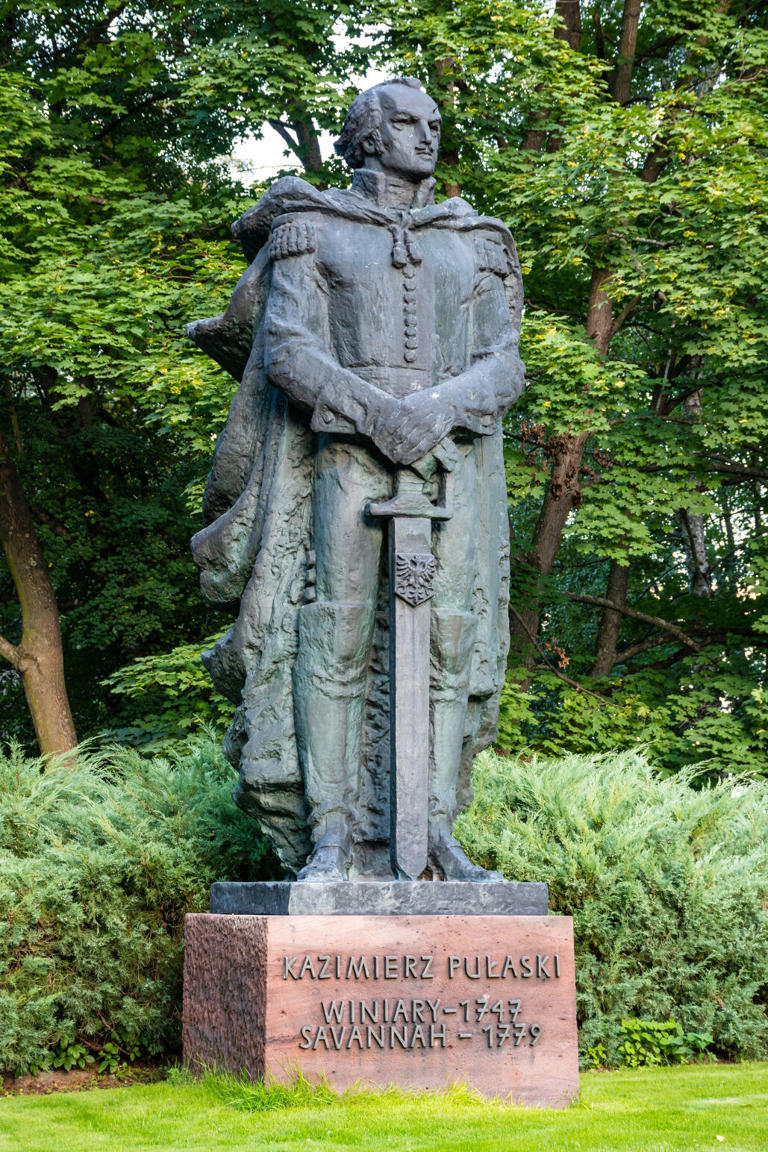Was this Washington-era general secretly intersex?
Opinion by Henry Giardina
• 22

Was this Washington-era general secretly intersex?
This past Sunday was Intersex Awareness Day, and these days, it’s more important than ever to amplify intersex stories from the past and present.
While the horrible people currently running the country are trying to expel trans people from the military and claim that intersex people simply don’t exist, one story from history proves just how ridiculous these efforts are. Because if it weren’t for intersex people, we’d be looking at a very different country. In fact, we might not even have a country at all.


Polish war hero Casimir Pulaski didn’t live to see the other side of 34, but in the short time he did live, he made his mark on Polish, American, and general military history by bringing his rebellious energy to the fight for US independence. And he was probably intersex, a fact that scholars only just recently uncovered.
Pulaski fought for Polish independence from Russian interference in his homeland, but in the final few years of his life, he shifted his attention toward another, similar fight against foreign rule. In 1777, just two years before he would meet his death on the battlefield, Pulaski met Benjamin Franklin and General Lafayette during a trip to France. It was Franklin who wrote to George Washington of Pulaski’s promise and encouraged the general to take Pulaski on as a volunteer in the fight for American independence from British rule.


Washington did so, and luckily: soon enough, the young Polish fighter would save Washington’s life at the Battle of Brandywine, where Pulaski brought back information from the front lines that allowed Washington to safely retreat from encroaching British forces eager to make an example of him.
That move cemented Pulaski in the public imagination, but a later battle against French forces in Savannah enshrined the Polish fighter as a historical legend. As stated by queer history scholar Amanda W. Timpson, Pulaski transformed a roguish gallery of men into a regimented group of fighters using the military knowledge he gained in Poland. After his death by grapeshot, Pulaski quickly became a hero of myth, his struggle against British tyranny depicted in several statues, paintings, and even architectural monuments throughout America.
But what was the deal with Pulaski’s gender, and how did we come to learn about it so late in the game? In true CSI fashion, it all has to do with Pulaski’s remains. In the years following Pulaski’s death, historians looking to fill in the gaps surrounding the circumstances of his internment ended up exhuming Pulaski’s corpse not once but twice. The second time, in 1996, they noticed something interesting. Pulaski’s skeleton more closely resembled the remains of someone assigned female at birth.


But because we don’t know if Pulaski was actually buried where we think he’s buried, it’s hard to say whether the skeleton exhumed actually belongs to the Polish general. If it does—and DNA evidence says that it’s likely—Pulaski’s gender presents a much more complicated historical question. We know that plenty of historical military figures from Joan of Arc to Antonio de Erauso had a much more modern interpretation of their gender than scholars would have thought possible. But with a figure like Pulaski, who made his mark as a military hero, it seems unlikely that there wouldn’t be some documentation of his birth gender.
That said, there could be another explanation. In the past, parents of intersex children were often forced to “choose” a sex for their child based on whatever sex characteristics seemed the most dominant. If they didn’t make this choice, their child would be deemed a social outcast and the parents ostracized and shunned. Sadly, this practice is still common to this day in certain cases, leading to broader confusion for adults whose intersex identity isn’t revealed to them until they’re older.
In Pulaski’s case, we will likely never know exactly what’s going on gender-wise with the man whose superior military instincts shaped American history. But we can always remember that when it comes to prominent figures from the past, there’s often much more queerness than meets the eye. |





